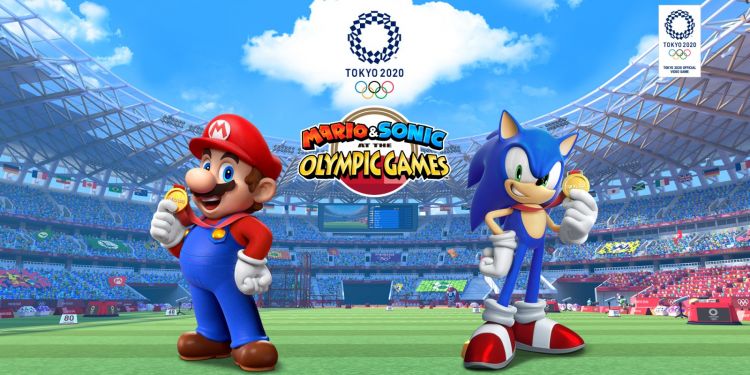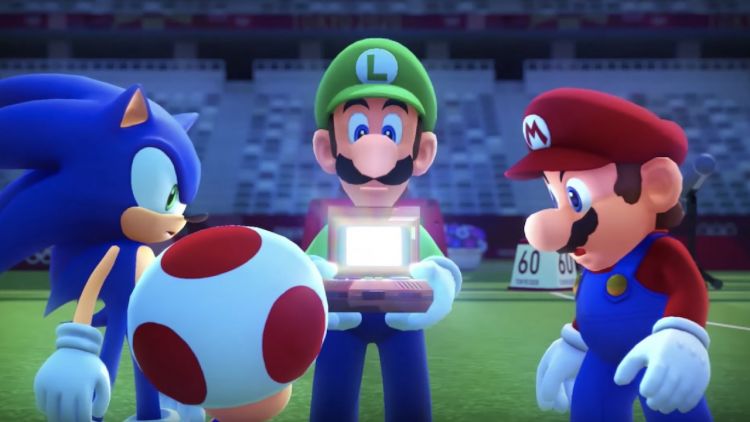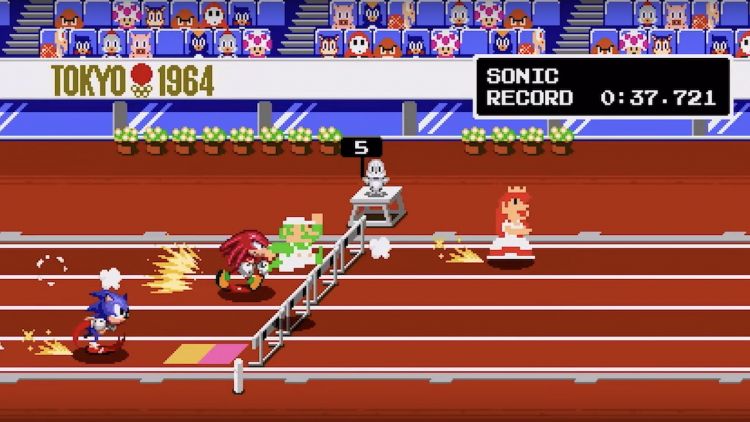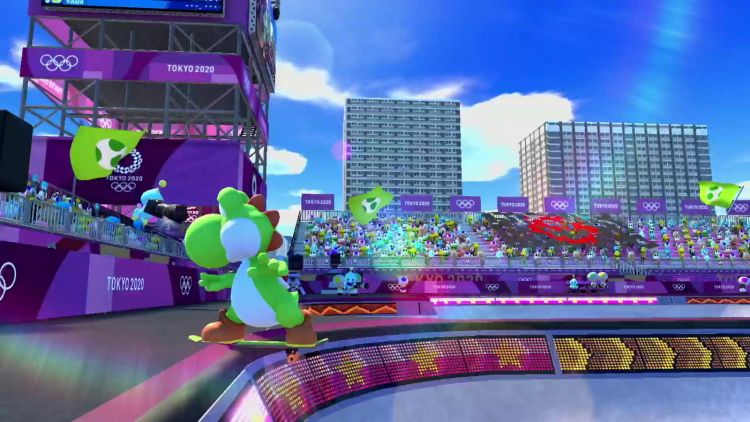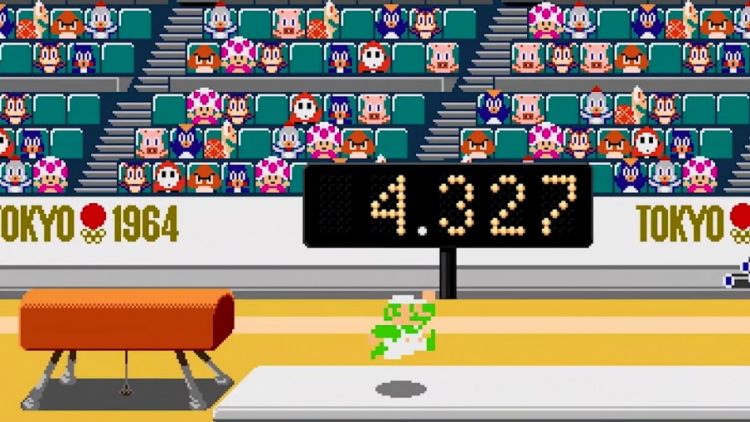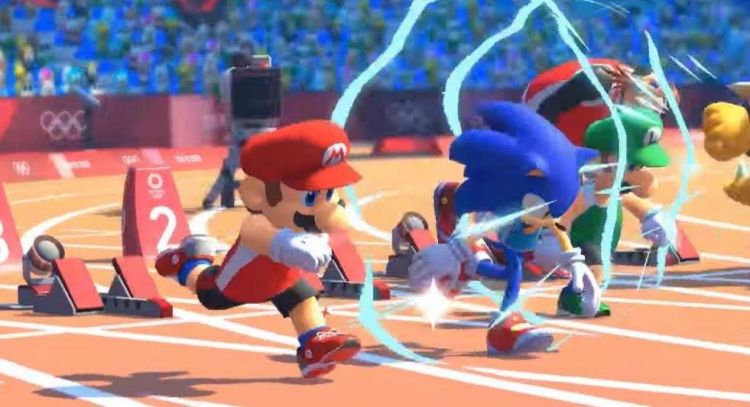Mario & Sonic at the Olympic Games: Tokyo 2020 (here on referred to as Mario & Sonic: Tokyo 2020) looks like just another rehash of the old 3DS games in the franchise. However thanks to some retro inclusions with a story that just takes the joke out of everything, this version feels like something new that could only be done on the Nintendo Switch.
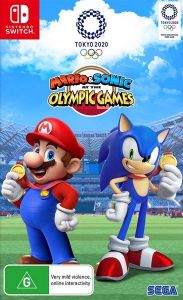
Platform(s): Nintendo Switch (Reviewed)
Publisher(s): SEGA
Developer(s): Sega Sports R&D
Release Date: November 5, 2019 (US) / November 8, 2019 (AUS)
Price: $59.99 (Gamestop US) / $79.95 (EB Games Australia)
Genre: Sports
Story
For the first time in the Mario & Sonic franchise, there is an actual story mode… If you want to call it that. What we get in Mario & Sonic: Tokyo 2020 is a weird little story involving the upcoming Tokyo 2020 event and the first time Tokyo hosted the Olympics back in 1964.
The main “plot” of Mario & Sonic: Tokyo 2020 involves a plan created by Dr. Eggman (or Robotnic) and Bowser to trap Mario & Sonic inside a retro gaming console which is set to take the duo into a “Retro Game Realm” which is an alternate version of the Tokyo 1964 Olympic Games. Instead of just trapping our heroes, Eggman and Bowser also get trapped in the realm and the two teams fight against each other to secure Gold Medals in order to travel home. Meanwhile, back in Tokyo 2020, Luigi does his best to find someone with enough knowledge to help return Mario & Sonic to modern times.
Luigi is the real star of the story here, as his story-line to be the most compelling. Amazingly, Luigi, who only communicates through hand motions and head sways (mostly of the negative, super worried variety), is constantly thwarted on his mission to rescue Mario from unsuspecting cute characters like Sonic’s Amy. Very early in the game, Luigi finds out that Tails might be able to help tinker with the machine and get his brother to safety, but he’s constantly interrupted by people to compete in the Olympic games. While this is happening Bowser and Eggman fight like a married couple in the Retro Realm while Mario and Sonic soar like Olympic Gods.
Further augmenting the crazy story concept, Luigi and explore a hub world of Tokyo (with real locations) and Team Mario & Sonic have a retro hub of their own. Both have opportunities for side chats with other cast members, exploration, and a combination of real-world and fictional trivia (for the Olympics and cast members respectively). It’s not super deep, but above and beyond what’s done for a typical sports game based on the Olympics.
Gameplay
The gameplay for Mario & Sonic: Tokyo 2020 is pretty simple, to be honest. The mechanics of each game are listed during a small loading section so you know exactly what is needed during those games. For example, you mash the A button to run, then hit B to aim a jump, press R to unleash some sort of super move, etc. The biggest difference is that you have 10 2D Retro games and 21 modern games to choose from, each having their version of their respective controls. The Retro games use a more NES era style configuration, using only the A & B buttons, while the modern versions can use all 4 face buttons and 2 shoulder buttons for various things.
Speaking of the events that are on offer in Mario & Sonic: Tokyo 2020, there is very little overlap. As you can see from the list below, you only have 1 event that is shown in both lists: The 100m race. This keeps both sides from feeling stale and gives you more games to choose from. Some events do feel somewhat familiar like Judo and Karate, but once you give them a go, you’ll know the difference.
Also, there are “Dream events”, which are variations on some modern events with a multiplayer or some other change to make them into something more exciting. For example, Karate goes from being a one on one bout to being a 4 person free-for-all where you battle for tiles on the mat in order to win. These dream events are a great addition and make things interesting instead of the same old standards.
2D “Retro” Events
- 100m race
- 10m Platform (Diving)
- 400m Hurdles
- Gymnastics – Vault
- Judo
- Kayak Single (K-1) 1000m
- Long Jump
- Marathon
- Shooting – Trap
- Volleyball
3D “Modern” Events
- 100m race
- 110m Hurdles
- 4 x 100m Relay
- Archery
- Badminton
- Boxing
- Canoe Double (C-2) 1000m
- Discus Throw
- Equestrian – Jumping
- Fencing
- Football (Soccer)
- Gymnastics – Floor Exercise
- Javelin Throw
- Karate – Kumite
- Rugby Sevens
- Skateboarding – Park
- Sport Climbing
- Surfing – Shortboard
- Swimming – 100m Freestyle
- Table Tennis
- Triple Jump
Finally, you might notice some interesting new inclusions into the modern line up of events. New to the Mario & Sonic franchise and the Olympics themselves, are events like surfing, skateboarding, karate, and sport climbing. These events bring the Olympics into a more modern age while keeping the classic and traditional events alive as well.
Visuals
Graphics in Mario & Sonic: Tokyo 2020 is a very good mixed bag. Playing in handheld mode, everything runs smooth and looks amazing. In docked mode, things are just as good. There is nothing different from what this reviewer could see. So no frame rate changes, graphical up-scaling or anything.
Overall this is something shown by the two different styles in which Mario & Sonic: Tokyo 2020 is presented. The Retro styles look like something that would happen if you mixed an NES with a Genesis (or Mega Drive). The sprites look like they were ripped from the best games in their respective franchises and even those who might not have had a retro-style look like they had these designs available back in the day.
The modern style, by comparison, looks exactly like you would expect. All the characters look like their most recent outings on Nintendo’s Switch or Wii U. The grounds on which you play look very crisp and clear. You even get to see things like Chaos chasing your character around to get the best shot, the crowd holding up flags and signs (though not really that clear to be honest) in the background. Then there is the super move you get with each modern event, which makes your character sparkle and shine while doing something really out there and insane, but every moment is there on screen looking amazing.
Sound
Sound in Mario & Sonic: Tokyo 2020 is pretty simple. The background tracks are a mixture of sort-of-familiar and new tunes, the characters have their lines and noises from other games, and everything else is just sound effects.
Unfortunately, this is where I think Mario & Sonic: Tokyo 2020 falters since there was a great chance to use the classic themes from Mario and Sonic games of the past to get your blood pumping, and the same goes for the modern events too. I would have loved to skateboard to some sort of remix of say Rainbow Road or something like that; plus how cool would it be to run a race to the original Green Hills Zone theme? I know SEGA wants to keep things fresh and original since this is meant to be an Olympics title, but there was a missed chance at mixing in some retro nostalgia.
Replay Value
So once you have powered your way through the main story mode of Mario & Sonic: Tokyo 2020 and played all the events a few times in that mode, is there any real reason to jump back into them afterward? The answer is both yes and no.
Your enjoyment in just playing the events in Mario & Sonic: Tokyo 2020 all comes down to you as a person. If you’re the type of person who wants and needs to break that World Record and be the best at everything, then you’re going to come back to every event to do so. Outside of that, there isn’t much else on offer here.
The characters do play the same for the most part, with small differences in stats being the only thing to change. But the events themselves don’t hold much of a challenge nor do they serve any other purpose outside of World Record-breaking. I found myself easily beating the computer in most events even on the highest difficulty, so this means that unless you have a few friends around to give you a real challenge, you’re going to get bored of the events pretty quickly, and the story is only a one-time playthrough.
Review Disclosure Statement: Mario & Sonic at the Olympic Games: Tokyo 2020 was provided to us by Sega for review purposes. For more information on how we review video games and other media/technology, please go review our Review Guideline/Scoring Policy for more info.
Affiliate Link Disclosure: One or more of the links above contain affiliate links, which means at no additional cost to you, we may receive a commission should you click through and purchase the item.
A fun time once every four years
Game title: Mario & Sonic at the Olympic Games: Tokyo 2020
Summary
Mario & Sonic: Tokyo 2020 is one of those games where you would think it would be very stale, but thanks to some retro nostalgia it doesn’t. Sure, the games are limited and do wear thin after a while, but there are so many that it will give die-hard sports fans something to play at all times. The story is enough to give you a few chuckles but is only worth one play through.
Pros
- Simple and effective controls
- Graphics are crisp and cool
- Retro events are refreshing
Cons
- Events don’t have much to do but break records
- Story mode is a one and done affair
- Needs more retro events


